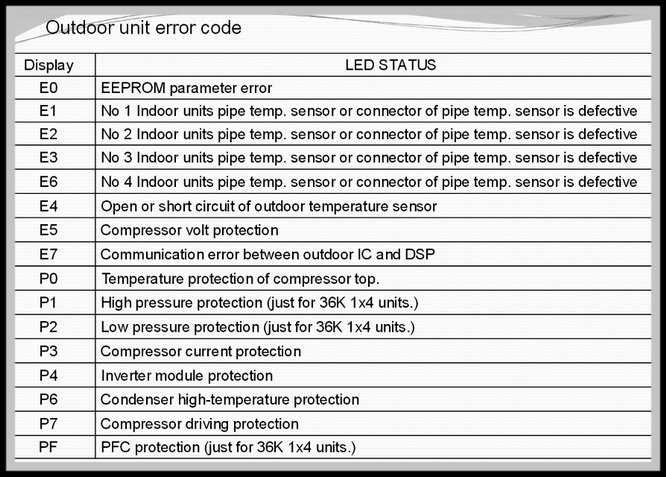
In simple terms, each error code corresponds to a particular issue or malfunction in the system. The “OE” error code is somewhat common, and it indicates that there might be a problem with water drainage. Imagine if you had a bathtub that just refused to drain; the water builds up over time and causes a bit of a mess. That’s sort of what’s happening inside your air conditioner when you see this error code. It’s all about the water, and knowing how to handle it can make all the difference in keeping your air conditioner running smoothly.
Understanding the “OE” Error Code
Let’s dive deeper into what the “OE” error code really means. When your Midea air conditioner flashes this code, it’s because there’s an issue with the drainage system. Every air conditioner pulls moisture out of the air to cool your space, and this moisture needs to go somewhere; typically, it’s expelled through a drainage system. If something goes wrong, the water could back up, and that’s when the “OE” code pops up on your display screen.
Imagine your air conditioner as a sponge. It collects moisture from the air, and normally, this water drains away without you ever noticing. However, if the drainage line gets blocked, kinked, or frozen, it’s like having a sponge that’s soaked to the limit and can’t absorb any more water. This is why the error code appears—it signals that the system is unable to manage the water effectively, much like a sponge at full capacity needing a good squeeze.
Understanding the root is key, so you can resolve the issue promptly. If left unchecked, the water buildup might lead to internal damage, potentially compromising your unit’s performance. Thus, it’s crucial to pay attention to these warnings.
Common Causes of the “OE” Error
You might be wondering, “What’s causing my air conditioner to show this error?” Well, several factors could be at play. A common culprit is a blocked or clogged drainage pipe. Over time, dust, debris, or even mold can accumulate in the pipe, much like leaves in a gutter. This prevents water from flowing freely, causing it to back up into the unit.
Another typical cause is a faulty condensate pump. This pump is designed to move the water out of your unit and away from your space. If it fails or malfunctions, the water has nowhere to go, resulting in the “OE” code. Think of it like a broken down car on a busy highway—everything just backs up until the issue is cleared.
Additionally, incorrect installation or maintenance of the unit can lead to this error. If your air conditioner isn’t mounted at the right angle, it may not drain properly. It’s similar to a picture hanging askew on the wall—just enough off to be noticeable and problematic.
Steps to Fix the “OE” Error
So, how do you go about fixing this issue? First, you’ll want to check the drainage hose. Ensure it’s not twisted, kinked, or blocked by debris. You can often do this by turning off the unit and gently inspecting the hose for any signs of obstruction. Remember, just like unclogging a kitchen sink, sometimes it’s a simple fix.
Next, verify that the condensate pump is working. You can usually hear a soft hum when it’s operational, indicating that it’s functioning correctly. If it’s silent or making unusual noises, it might need repair or replacement. This is similar to listening for that comforting sound of an engine starting in your car.
Finally, double-check the installation angle of your unit. The back of the air conditioner should be slightly lower than the front to ensure proper drainage. Using a level tool, you can easily determine if the unit’s position needs adjustment. It’s like realigning a picture frame to sit perfectly flat against the wall.
Preventative Measures and Tips
To avoid encountering the “OE” error in the future, regular maintenance is a must. Ensure that the drainage line and condensate pump are cleaned and inspected at least once a year. This is akin to getting your car serviced regularly—prevention is always better than cure.
Additionally, installing your unit correctly in the first place can save a lot of trouble later. Making sure it’s perfectly level and positioned will help maintain optimal drainage flow. Much like building a strong foundation for a house, starting with the right setup ensures everything else runs smoothly.
If in doubt, always consult a professional. While many fixes are straightforward, a certified technician will have the tools and expertise to diagnose and fix any persistent issues. It’s always better to be safe than sorry, especially when it comes to ensuring your home comfort through a working air conditioner.
Remember, dealing with air conditioner issues doesn’t have to be daunting. By understanding the signs and knowing the steps to take, you can keep your Midea air conditioner running efficiently, ensuring a cool and comfortable environment all summer long.